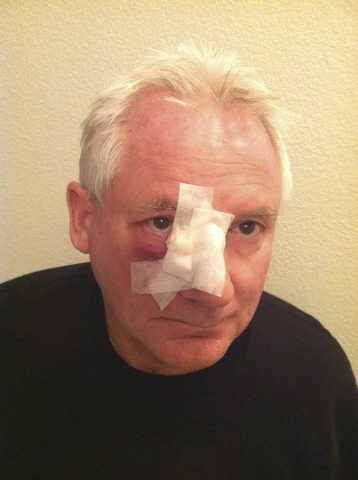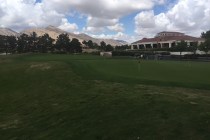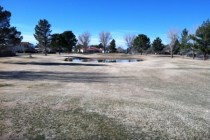Skincare counts for the golfers, too
“It’s like poking a hole in a Picasso.” — John Asay, Oct. 30, 2013.
This is a public service announcement. Please read.
I grew up in Southern California, hung out at Zuma Beach, loved the ocean, oriented vacations to beach cities and owned houses with swimming pools. Later in life, it was a love of golf that kept me basking in the sun. Pair that with an aversion to wearing hats, and it looks like cancer finally caught up with me.
Skin cancer is described as an uncontrolled growth of abnormal skin cells and can be one of three: Basel Cell Carcinoma, Squamous Cell Carcinoma or Melanoma. Dr. Robert Strimling, who practices at Summerlin Hospital Medical Center, explained how skin cancer occurs: “All skin cells start out normally, and due to sun exposure and other carcinogens, we begin to see a destruction of DNA, and that ultimately leads to a cell that grows uncontrollably. That’s what cancer is — a cell that grows uncontrollably.”
According to Dr. Strimling, there are three categories of skin cells where cancer originates — basel, squamous and melanoma.
My skin cancer began with a sore that scabbed, cleared up and then reappeared. Maybe it was a pimple, an inadvertent scratch, a mosquito bite. Yes, I scratched it. And it went away. Solved, fixed. Nope, no such luck; it came back.
Dr. Strimling diagnosed it as Basel Cell Carcinoma, the most benign form and the one that can be completely eliminated with treatment.
“Basel is the most unlikely form to grow and spread and seed throughout the body,” he said. “With it, we see about a 99 percent cure rate.”
So I would need to get it removed. One problem, however: My BCC was located smack dab in the inner corner of my right eye.
Mohs Micrographic Surgery was developed in the 1930s by Dr. Frederick Mohs. With refinements and enhancements over the years, it’s now the gold standard for treatment. It involves extracting the cancerous cells and immediately examining them microscopically to ensure all of the boogers were removed. If not, further surgery is done on the spot, and the microscopic inspection repeated until all hot areas are gone.
The injection of Lidocaine hurt the most — pinpricks really close to the eyeball. Soon, the right side of my face was completely numb. The surgery was over in 10 minutes, the wound cauterized, gauzed up, and the waiting began see if I was cancer-free. The answer came in an hour: My cancer showed signs of trailing, and so it was back under the knife.
During post surgery, Dr. Strimling said I would need reconstructive plastic surgery because of the close proximity to the eye. Or, I could have two holes in my face, my choice.
Four Mohs surgeries in five years, and I can offer these words of advice, according to the PGA suggestions:
1) Carry sunscreen. Apply generous amounts of (UVA/UVB) 45 SPF or higher and reapply every two hours. Don’t forget your scalp, neck and ears.
2) Tee off early or tee off late (after 4 p.m.).
3) Seek shade, find a tree.
4) Don’t allow yourself to burn.
5) Wear wide-brimmed hats.
6) Wear long-sleeved shirts and long pants.
7) Wear wraparound sunglasses that block 99 to 100 percent of UV radiation.
8) Protect yourself, especially on overcast days.
This is going to be a life-changer for me. Put yourself in my shoes. I hate wearing hats, and now I have to find something that resembles style to wear. I hate greasy stuff on my face. Anybody ever find a non-greasy sunscreen that vanishes after application?
Only one good thing has come out of this: I wrote this column on Halloween. This year, I didn’t have to wear a horrifying mask.
John Asay is a longtime golfer and local freelance writer. Contact him at jasay@reviewjournal.com.





















